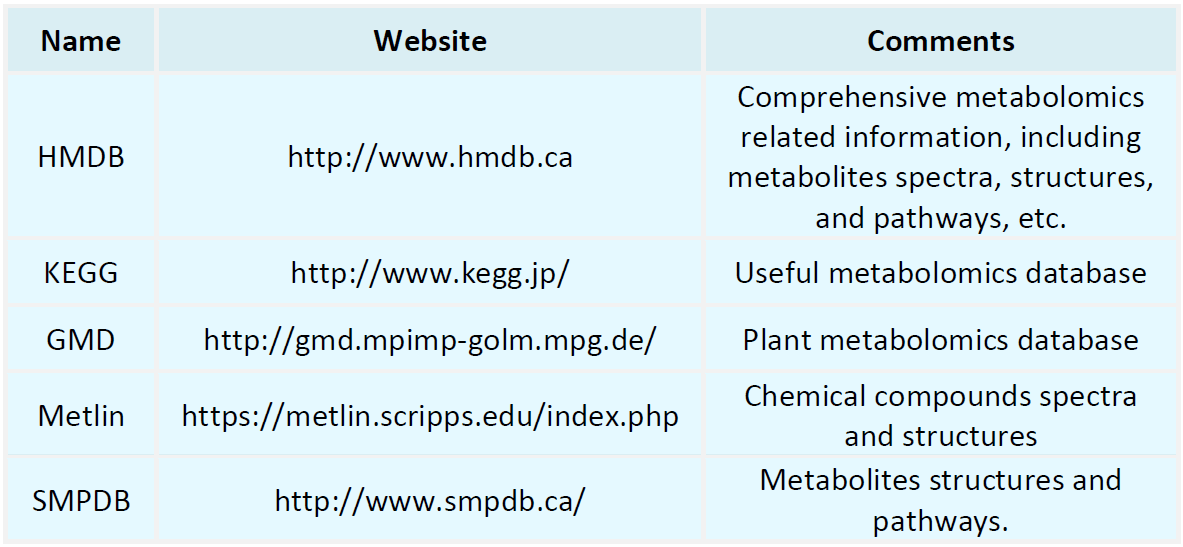Resources
Proteomics Databases

Metabolomics Databases

-
Isotop ABPP is an innovative proteomics technique that integrates the benefits of isotope labeling, tandem mass spectrometry analysis, and protein digestion reactions to comprehensively study protein functions and activation states. In this technique, “isotop” refers to stable isotope tags used to label proteins or their fragments, providing accurate quantification in mass spectrometry analyses. The term “tandem” refers to the multi-stage process in mass spectrometry, where ions are generated through ......
-
• Protein Interaction Analysis Overview
Protein Interaction Analysis aims to uncover the physical and functional relationships between proteins. Proteins, as fundamental molecules of life, form complex networks through interactions, performing various biological functions. Protein interaction analysis has broad applications across multiple fields. In drug development, understanding the interactions of specific proteins aids in identifying drug targets, thus enhancing the selectivity and efficacy of drugs. In disease research, abnormal prote......
-
• Single Cell T Cell Receptor Sequencing
Single cell T cell receptor sequencing is an advanced technique used to investigate the diversity and specificity of T cells in immune responses. The T cell receptor (TCR) is a protein complex on the surface of T cells that recognizes and binds specific antigen peptides in conjunction with major histocompatibility complex (MHC) molecules, triggering T cell immune responses. The high diversity of TCRs enables them to recognize a broad array of antigens, which underpins the adaptive and specific nature ......
-
Edman degradation steps are precise and efficient, primarily comprising: 1. Sample Preparation, ensuring the purity and integrity of the protein sample; 2. Chemical Modification, reacting phenylisothiocyanate (PITC) with the N-terminus of the polypeptide chain to form derivatives; 3. Selective Degradation, cleaving and releasing the labeled N-terminal amino acid; 4. Detection and Identification, identifying the released amino acids through chromatography or mass spectrometry. This series of operations......
-
• Proximity Extension Assay (PEA)
Proximity Extension Assay (PEA) is an emerging molecular technique used to detect and quantitatively analyze low-abundance proteins in biological samples. PEA relies on the high specificity of antibodies to target proteins. By attaching unique DNA sequences to two antibodies, these sequences can undergo a proximity extension reaction when the target protein is present, generating a detectable signal. The core principle of PEA is the use of a pair of specific antibodies that bind to distinct epitopes o......
-
• Olink Proteomics in Drug Development and Disease Research
Olink proteomics leverages innovative technologies developed by Olink to enable precise and high-throughput protein analysis. Central to this platform is the Proximity Extension Assay (PEA) technology, which uses paired antibody-conjugated DNA probes. Upon binding to target proteins, these probes initiate a chain reaction amplification, allowing for the sensitive and specific detection of up to thousands of proteins. This approach has become indispensable in biomedical research, facilitating biomarker......
-
Proximity Extension Assay (PEA) is a novel protein detection technique that offers high sensitivity and specificity. The principle behind PEA relies on the binding of two antibodies to the same target protein, with DNA sequences attached to these antibodies becoming sufficiently close to each other. This proximity enables the formation of a detectable double-stranded DNA signal through an extension reaction. By combining the specificity of antibodies with the amplification power of nucleic acids, PEA ......
-
Biomarker discovery involves identifying and validating substances or molecules within organisms using a variety of technical approaches. These molecules can serve as indicators of normal biological or pathological processes or as markers for therapeutic responses. Biomarkers may include DNA, RNA, proteins, metabolites, or even cell populations. Among these, proteomics-based mass spectrometry has emerged as an essential tool in biomarker discovery. In the medical field, biomarkers have transformed the......
-
Custom peptides are synthesized peptide sequences tailored to specific research objectives or application requirements. These peptides can be precisely designed in terms of length, amino acid sequence, and chemical modifications to address specific scientific or industrial challenges. In medical research, custom peptides have broad applications, including vaccine development, antibody production, and drug target validation. Through rational design and synthesis, they can emulate the functional propert......
-
Target identification refers to the process of determining the interaction between a drug or molecule and a specific biological target, such as a protein or nucleic acid, within an organism. As a central element in biological mechanisms, target identification is pivotal in uncovering the action mechanisms of drugs in cells, tissues, or organs, thereby facilitating the development of novel therapeutics, precision medicine strategies, and a deeper understanding of disease pathogenesis. This methodology ......
How to order?







